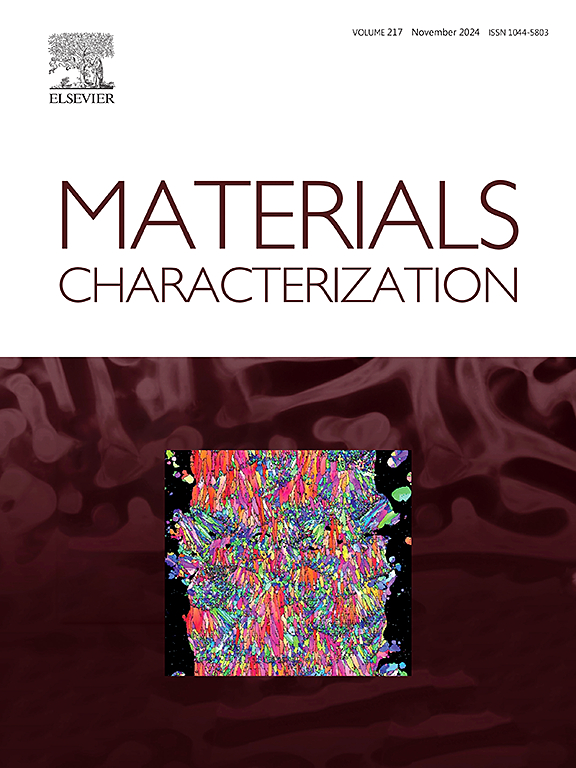烧结钕铁硼磁体中环境空气不稳定缺氧面心立方NdOx相
IF 5.5
2区 材料科学
Q1 MATERIALS SCIENCE, CHARACTERIZATION & TESTING
引用次数: 0
摘要
在大面积清洁烧结钕铁硼板坯中发现了环境空气(20±3℃,< 55% RH)的快速氧化和某些富nd相的急剧体积膨胀。结合聚焦离子/电子双束系统(FIB/SEM)和扫描/透射电子显微镜(S/TEM)的准原位研究揭示了缺氧面心立方(fcc) NdOx相的均匀氧化和非均匀氧化。暴露于环境空气5分钟后,fcc (Nd + Pr)O0.47氧化,形成一百多纳米厚的多孔无定形氧化层,从表面膨胀。fcc NdOx晶粒中氧的不均匀分布导致氧化不均匀,低氧含量区域在环境空气中优先氧化,导致非晶态转变。暴露于环境空气几个月后,最初的无定形氧化产物转变为六方密排的Nd(OH)3。电子束辐照诱导的相变研究表明,缺氧fcc NdOx在环境空气氧化过程中的无定形转变是由氧而不是水蒸气的反应驱动的,因为没有检测到水分子的分解。本文章由计算机程序翻译,如有差异,请以英文原文为准。
Ambient air unstable oxygen-deficient face-centered cubic NdOx phases in sintered NdFeB magnets
The rapid ambient air (20 ± 3 °C, <55 % RH) oxidation and dramatic volume expansion of some Nd-rich phases have been identified in a large-area and clean sintered NdFeB slab. Quasi-in-situ studies combining a focused ion/electron dual beam system (FIB/SEM) and a scanning/transmission electron microscope (S/TEM) have revealed both uniform and non-uniform oxidation in oxygen-deficient face-centered cubic (fcc) NdOx phases. After 5 min of exposure to ambient air, the fcc (Nd + Pr)O0.47 oxidized, developing a porous amorphous oxidation layer over a hundred nanometers thick that expanded from the surface. The inhomogeneous distribution of oxygen in a fcc NdOx grain induced non-uniform oxidation, with the low oxygen content region preferentially oxidized in ambient air, resulting in an amorphous transition. After several months of exposure to ambient air, the initially amorphous oxidation products transformed to hexagonal close-packed Nd(OH)3. The electron beam irradiation-induced phase transition studies suggest that the amorphous transition of oxygen-deficient fcc NdOx during ambient air oxidation is driven by a reaction with oxygen rather than water vapor, as no water molecule decomposition was detected.
求助全文
通过发布文献求助,成功后即可免费获取论文全文。
去求助
来源期刊

Materials Characterization
工程技术-材料科学:表征与测试
CiteScore
7.60
自引率
8.50%
发文量
746
审稿时长
36 days
期刊介绍:
Materials Characterization features original articles and state-of-the-art reviews on theoretical and practical aspects of the structure and behaviour of materials.
The Journal focuses on all characterization techniques, including all forms of microscopy (light, electron, acoustic, etc.,) and analysis (especially microanalysis and surface analytical techniques). Developments in both this wide range of techniques and their application to the quantification of the microstructure of materials are essential facets of the Journal.
The Journal provides the Materials Scientist/Engineer with up-to-date information on many types of materials with an underlying theme of explaining the behavior of materials using novel approaches. Materials covered by the journal include:
Metals & Alloys
Ceramics
Nanomaterials
Biomedical materials
Optical materials
Composites
Natural Materials.
 求助内容:
求助内容: 应助结果提醒方式:
应助结果提醒方式:


